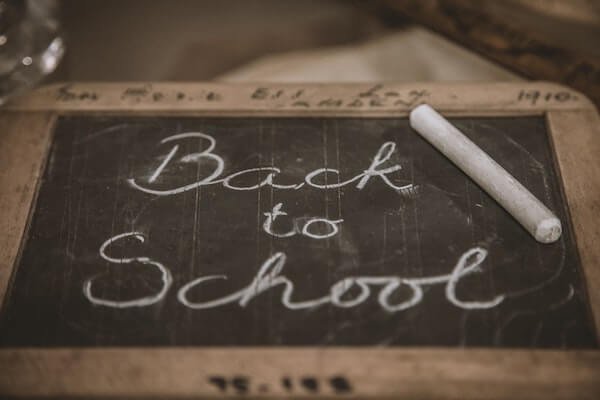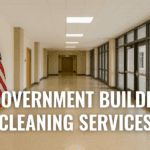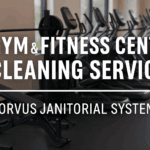Disinfection is an important step in your back-to-school checklist, but it isn’t enough on its own. If other precautions, like wearing masks, physically distancing, and practicing good hand hygiene aren’t followed, it won’t do much. Educators and leaders in the public health space are diligently working to put together programs that’ll help schools across the country reopen safely and responsibly. While they develop these programs and guidelines, here are a few things to keep in mind as you get ready to reopen your school:
Implementing general safety measures is key
As we all adjust to new rules and ways of living, establishing, and maintaining effective communication is crucial. Over the coming months, guidelines and best practices may change to adapt to new needs. Continuing to communicate with important local officials and other educational institutions in the area can help you stay on top of these changes and keep everyone healthy and safe. Make sure to put a plan in place for handling future closures in the case of a new outbreak.
With cold weather coming, many health officials have speculated that COVID-19 cases will increase as flu season hits. As schools and businesses begin to reopen across the country around the same time, additional cases are inevitable. Have a comprehensive plan in place for everyone to follow. It’s also important to develop a separate plan for at-risk students. Students with pre-existing health conditions should be provided with resources that’ll help them succeed at home instead of on-site.
Promoting healthy hygiene practices can help stop the spread
Healthy amounts of proper handwashing may be our best defense against the spread of COVID. This is an easy and effective way to remove germs and protect against infection. Another important hygiene practice is to avoid touching your mouth, nose, or eyes. Ensure everyone is covering all sneezes and coughs. We’ve heard a lot about this throughout the year, but this isn’t always something that comes naturally to students, especially young ones.
Take the time to educate your students on proper healthy hygiene practices before you reopen, and keep educating them after they arrive. Spend extra time on this with your younger students. Put up signs in the hallways, bathrooms, classrooms, and common areas. If you can, encourage students and employees to wear face masks or cloth coverings.
Checking for COVID symptoms will help keep everyone safe
Be sure to put screening procedures in place for anyone entering your school, including all students and staff. If you operate a small enough school, forehead scanners drastically cut down the amount of time you need to take everyone’s temperature. But in most schools, this won’t work. Instead, asking each person if they’ve had any COVID symptoms, and having them fill out a check-in form, is more practical.
In the case of potential exposure, keep clear records. Encourage anyone feeling COVID symptoms or anyone that has been in contact with a COVID-positive person to stay home. Sometimes, COVID symptoms can sneak up on you. Keep a separate room or area to isolate anyone who shows COVID symptoms unexpectedly during the school day. Once they’ve been tested, you’ll either be clear to open the space back up (if they’re negative) or you’ll have to close off areas they’ve used (if they’re positive) and clean and disinfect these spaces before others can use them again.
Educating students, employees, and families will get everyone on the same page
While you may be on top of updates from the Centers for Disease Control (CDC), local health officials and educators in your area, your students and their families may not have all of the information that you do. Inform students and families of enhanced cleaning and disinfecting measures, guidelines for safe social distancing, the requirements around face masks, your preferred screening procedures, and your plan for symptom identification. You can do this in a variety of ways:
• Post updates on your school’s website
• Send regular email updates to your students and their parents
• Create a social media page dedicated to reopening and staying healthy throughout the school year
• Develop webinars for students, families, and employees
• Send home flyers
Whether you choose to do one or several of these things, you’re not only helping to maintain a safe school environment. You are encouraging a safe environment at home, too.
You’ll need to intensify your regular cleaning and disinfecting procedures
While it’s difficult to monitor or control the actions of all of your students and employees, it’s easy to exercise control over the environment. By the time your school reopens, it should be effectively cleaned and disinfected. But it shouldn’t end there. Intensified cleaning and disinfecting procedures should be implemented after you reopen, too. While cleaning gets rid of the dirt, dust, some germs, and other materials that collect on surfaces, it won’t necessarily kill harmful bacteria or viruses. For that, you need disinfection, which does kill bacteria and viruses.
Focusing on high-touch surfaces doorknobs, desks, light switches, sinks, water fountains, and cafeteria trays can help drastically reduce the chance of these bacteria and viruses spreading. Keeping a surplus of supplies on hand and closing shared spaces like fountains and cafeterias can also help. If these areas can’t be restricted, increased cleaning and disinfecting can help here, too.
For everything from deep corners to high-touch surfaces, Corvus Janitorial has your cleaning and disinfecting needs covered. We use high-level techniques and tools along with COVID-approved chemicals to give you the best cleaning and disinfecting services available. Reach out to us today for a free quote for your cleaning, disinfecting, and sanitizing needs.













